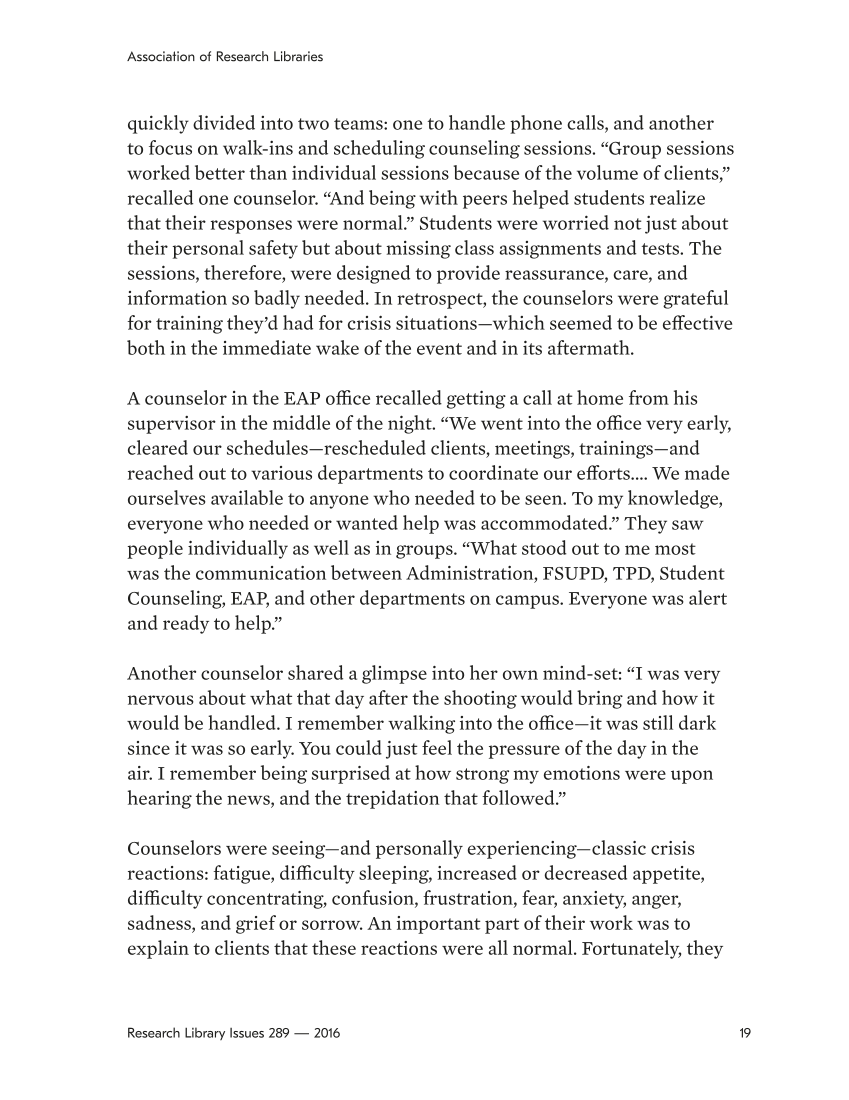19 Association of Research Libraries Research Library Issues 289 — 2016 quickly divided into two teams: one to handle phone calls, and another to focus on walk-ins and scheduling counseling sessions. “Group sessions worked better than individual sessions because of the volume of clients,” recalled one counselor. “And being with peers helped students realize that their responses were normal.” Students were worried not just about their personal safety but about missing class assignments and tests. The sessions, therefore, were designed to provide reassurance, care, and information so badly needed. In retrospect, the counselors were grateful for training they’d had for crisis situations—which seemed to be effective both in the immediate wake of the event and in its aftermath. A counselor in the EAP office recalled getting a call at home from his supervisor in the middle of the night. “We went into the office very early, cleared our schedules—rescheduled clients, meetings, trainings—and reached out to various departments to coordinate our efforts.… We made ourselves available to anyone who needed to be seen. To my knowledge, everyone who needed or wanted help was accommodated.” They saw people individually as well as in groups. “What stood out to me most was the communication between Administration, FSUPD, TPD, Student Counseling, EAP, and other departments on campus. Everyone was alert and ready to help.” Another counselor shared a glimpse into her own mind-set: “I was very nervous about what that day after the shooting would bring and how it would be handled. I remember walking into the office—it was still dark since it was so early. You could just feel the pressure of the day in the air. I remember being surprised at how strong my emotions were upon hearing the news, and the trepidation that followed.” Counselors were seeing—and personally experiencing—classic crisis reactions: fatigue, difficulty sleeping, increased or decreased appetite, difficulty concentrating, confusion, frustration, fear, anxiety, anger, sadness, and grief or sorrow. An important part of their work was to explain to clients that these reactions were all normal. Fortunately, they






































